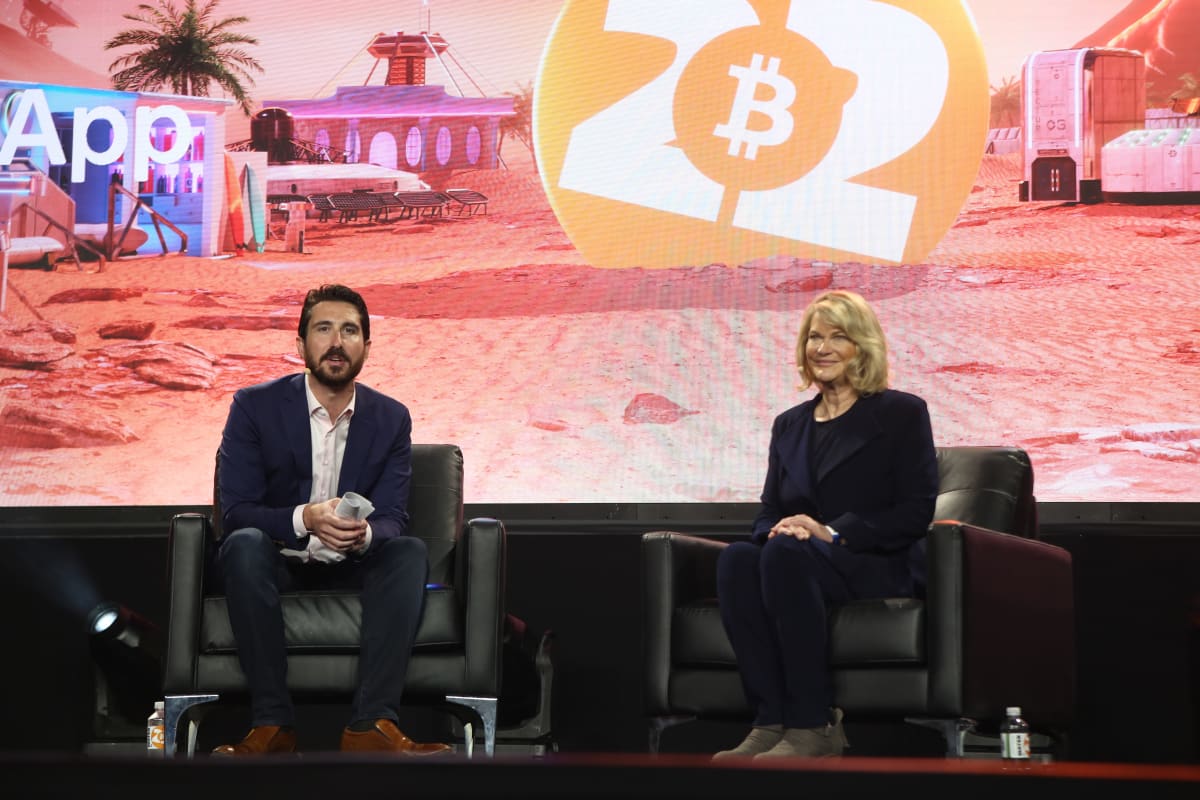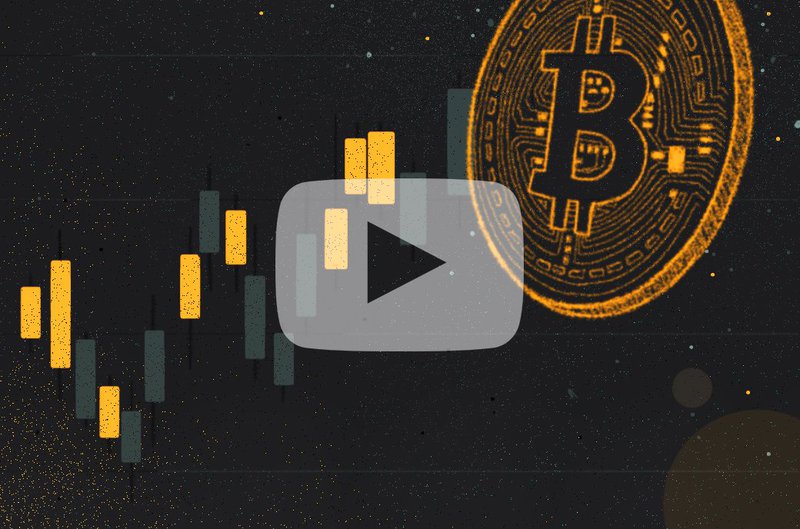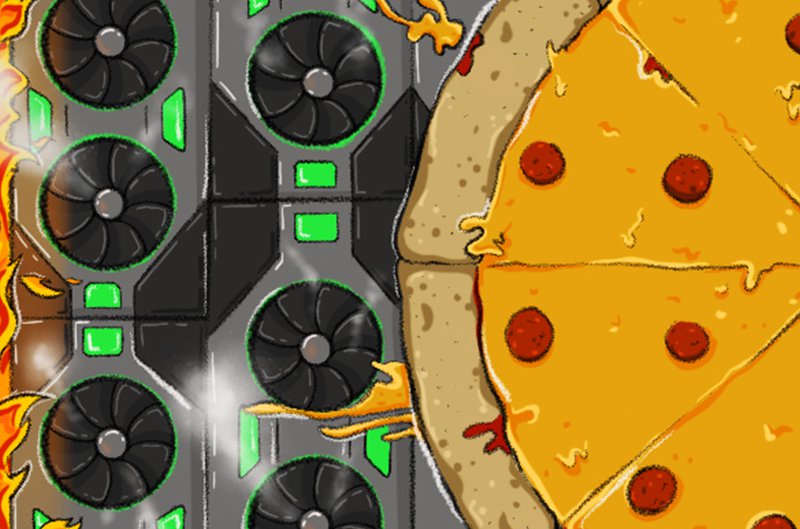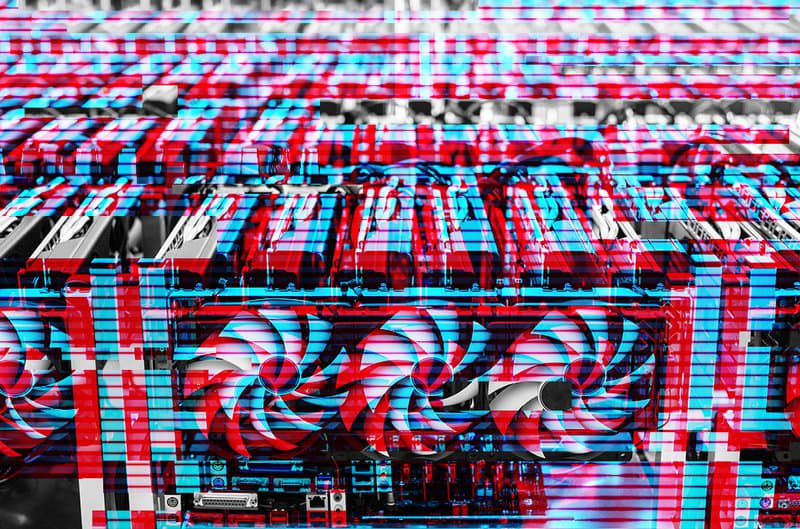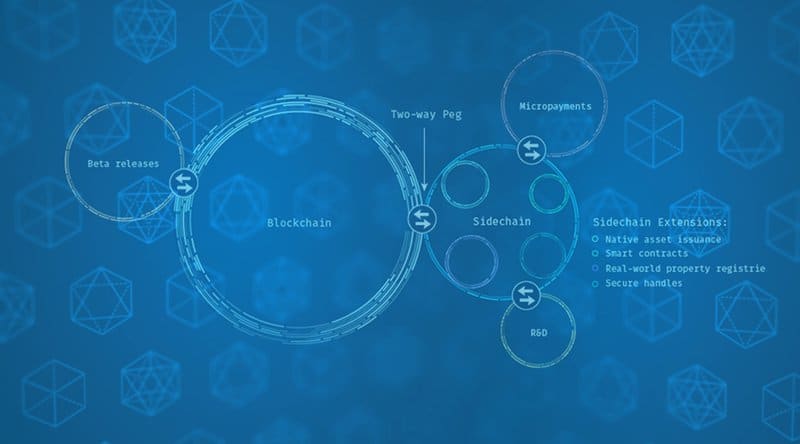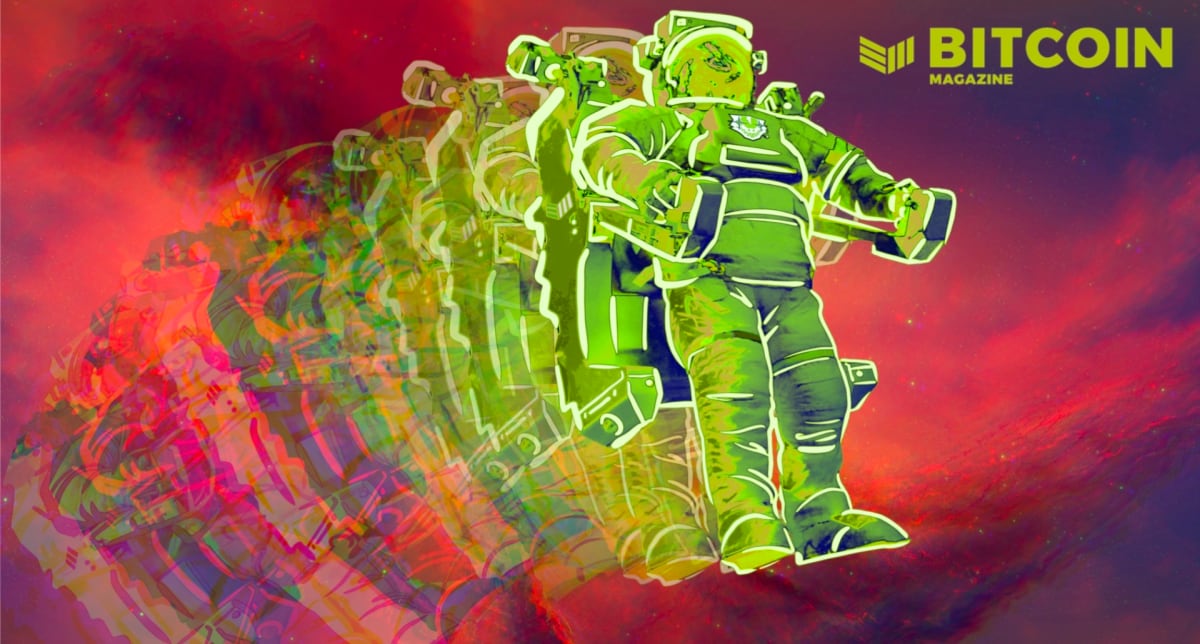Bitcoin, Carbon Credits And Regenerative Farming
How can Bitcoiners accelerate a transition into regenerative farming and cattle management?
An article discussing a speculative attack on the carbon credit system to sustainably rebuild the U.S. food supply chain and redenominate fiat into bitcoin, cattle and topsoil.
There is a lot of interest and discussion among the Bitcoin community surrounding our food supply chain, its fragility and solutions to the problem. There is a general consensus on what needs to happen: resilient, independent genetic cattle stock need to be reintroduced en masse into the U.S. to provide a more robust meat supply. Regenerative ranching techniques need to be used with said cattle to rebuild the topsoils of the country and stop the desertification of the Midwest. Citadels with independent water and energy resources need to be built that will use those techniques to responsibly manage large tracts of land, producing a food supply chain that is not dependent on inputs to survive.
The debate, then, is not about the what but the how. I argue that the most potent play (and, really, the only realistic one) is a speculative attack on the corrupt system of carbon credits and environmental, social and governance (ESG) standards. In short, Bitcoiners can use the cantillionaire system the cronies have established to beat them at their own game.
We fully understand and respect that many Bitcoiners may disagree with our position here, perhaps strongly. But a look back at the major civil and human rights struggles in modern history (India, South Africa, the United States) shows that success has often required both strong external resistance and internal destabilization.
Setting The Stage: The Problem
Profit margins in ranching are extremely slim.1 Traditional ranching requires knowledge and expertise in genetic testing, artificial insemination, calving and disease control. Throughout its lifetime, a cow will need regular vaccinations, antibiotics, antiparasitics, vet visits, pest treatments, etc., not to mention the significant annual investment in supplemental feed — anything from hay to brewer’s mash to reject skittles.2 The four mega-meat processors require arbitrary phenotypic traits (which amount to a bovine beauty contest) for a rancher to receive reasonable returns, and processors are known to engage in price fixing in order to force the ranchers to keep their rates low.3 The situation has produced a ranching monoculture, leading to less robust genetic stock, dependency on external inputs and a perilous fragility of the overall food system.
Meanwhile, heritage breeds of cattle exist that can live exclusively on scrubland, are naturally pest and parasite resistant and don’t need human assistance with reproduction or birth. Unfortunately, however, they are currently few and far between. Even if a rancher wanted to use these breeds, they command only a third of the price of the “popular” cow breeds, making it economically unfeasible for all but a few. Most ranchers simply do not have the profit margins to switch from current industrially accepted breeds to the heritage breeds, with the net revenue even for standard cows averaging less than $75 in profit per cow in a good year.4 There’s simply no way the average rancher can afford the transition costs and time.
Regenerative farming is a process of dense rotational grazing of the cattle to mimic the historic effects of bison grazing. Techniques developed by Allen Savory and Joel Salatin mimic natural patterns of how predation forces migration of native animals. The cows are kept in dense formation and continuously rotated across a ranch at high frequency, while allowing the grasses to fully recover before the animals revisit a particular location. The resulting trimming of the grass stimulates more growth and denser roots, aeration of the soil by dense hoof trampling and significant deposition of fertilizer (manure and urine) to rebuild topsoils.
In contrast, traditional ranching leaves the cows to roam on thousands of acres at a time. This leads them to eat only their preferred grasses, which in turn allows the undesirable grasses to go to seed and propagate, slowly taking over. The leftover grasses also cover the soil in the winter, blocking sun and water and causing a thinning out of the field. The cycle repeats until there isn’t enough nutrition to sustain the herd, the topsoil washes away and the land deteriorates in a downward spiral. Regenerative ranching ends this destructive and unsustainable pattern.
Yet regenerative farming has one significant drawback: it is extremely hard to make it profitable in the near term. It is already difficult for a rancher to make a living using traditional practices, especially after taking on the debt that most will find necessary to acquire land. Add in the fact that regenerative farming will require a much longer “runway” before it starts to generate appreciable revenue, and it just isn’t practical for the vast majority of people who don’t have significant resources to fall back on.
The Solution
The solution is simple to describe, but rather difficult to execute: Bitcoiners can pool resources to buy large tracts of land in attractive areas, establish ranches with heritage cattle, farm them regeneratively and incorporate self-sustaining energy and water resources to maintain them independently.
But how do we actually do it? Buying a ranch large enough to make financial sense is out of the reach of most plebs. One potential solution would be for wealthy Bitcoiners to buy ranchland and altruistically involve plebs in its operation. With determined participants this could work, but in our opinion, given the difficulties in scaling altruism as well as the significant reluctance to part with bitcoin to buy land, this model is not widely practical. The landowner would not only need to part with their bitcoin (or leverage it), they would also need to be content with a near-zero return, at least in the short to medium term.
Thankfully, there is another option. To beat the cantillionaires at their own game, you first have to join it. And the name of that game is “carbon credits.”
Let’s first talk about the overarching philosophy of ESG and carbon credits. The vast majority of Bitcoiners are in agreement that the “ESGniks” are peddling farce and fallacy. They have created a fabricated system that they have then overlaid over abusive practices in order to perpetuate the generation of dirty fiat by the government and funnel it into cronyistic businesses, mega-corporations, and the establishment.
And to be raw and realistic for a moment — we can’t stop this system. It is the result of a global movement, decades in the making, with tremendous government and financial institution support, that is only going to have an increasing amount of fiat behind it in the coming years.
Large investment funds are beginning to require that portfolio companies report their ESG impact.5 Loan rates and access to favorable capital have started to become dependent on how close a company is to “net carbon neutral.”6 Canada’s supreme court recently upheld a law requiring that by 2030, companies must reflect their “carbon impact” on their balance sheet as a liability at the rate of $170 per metric ton for any excess impact.7 To put that in perspective, carbon credits trade right now at between $10-$100 per metric ton. This means any Canadian company that doesn’t buy credits to become “net carbon neutral” will have an accruing negative liability that will steadily erode access to the investment funds and/or leverage needed to survive. While Canada is the first country to do this, they are unlikely to be the last, meaning that policies like this will continue to artificially inflate the price of carbon credits. After all, it’s a no-brainer for a company to pay $150/metric ton instead of having a liability of $170/metric ton. This effectively creates a floor on carbon credit prices.
While we can’t stop this absurd and corrupt system, we can accelerate its demise. Bitcoin itself will do this, but in the interim, Bitcoiners can use the system to provide the financial support to build citadels, turning the dirty fiat into both BTC and large citadel ranches to support other pleb citadels. Ultimately, this will allow the whole ecosystem and supply chain to be rebuilt on solid first principles.
The linchpin of this plan will be gaining the financial backing of like-minded investors and investment funds. These will be backers who, like it or not, still live in today’s fiat world and need to see returns in fiat. Without them, none of this is possible — there will instead only be a small group loudly protesting the current system with no ability to effect change. (Even if it were to be a large number of people, they would still have no real power to influence legislation or the financial markets compared to the influence of the cantillionaires.)
Therefore, we propose that we use the ESG system against itself. We use the system to build and support a return to first principles that function to rebuild the world with a resilient food supply. Properly constructed, we can provide ranchers with the financial freedom to acquire and invest in the right land and animals, and to manage it all in the right ways.
How could you make this work in practice? Consider a large ranch in an area extremely favorable to ranching — say, 10,000 acres. The land is as cheap as possible because it’s been totally over-grazed and is not much use to traditional ranchers, so it sets you back $5 million. After a year of ownership, the property would become eligible to apply for a conservation easement. In Wyoming, for instance, the state will pay a one-time fee to compensate you for the loss of residential or commercial development opportunities.8 This payment will range from $600,000 to $6 million, depending on specific details of the exact parcel. Not a bad start!
Now that the easement is in place, you the owner will also receive some significant federal tax credits (up to 50% of your Adjusted Gross Income per year, with a carry-forward of 15 years), so any money made ranching doesn’t incur federal Income taxes any time soon — and there’s no state income tax in Wyoming.
Next come the carbon credits. For putting the easement on the land and preventing development, the ranch can earn 0.75 metric tons of carbon credits (tCO2) per acre per year, or 7,500 tCO2 in this example. Currently, the credits command $60-$100/tCO2 in the U.S. market. That means $450,000-$750,000 per year in revenue in perpetuity (or, rather, until the system implodes). But at these numbers, you will have paid off the land in less than five years. And, as discussed above, the nominal price of credits is likely to rise significantly in the next few years, increasing returns even further.
But wait, doesn’t the easement prevent productive use of the land? Not for this use case! In much of the Midwest, the easement program was designed as a way to protect generational land, helping ranchers get out of debt and giving them peace of mind that they’ll be able to pass along the ranch to their children (with no mortgage, so they can afford to feed their families on the ultra-slim net profits of raising cattle). The easements allow development of ranch buildings, cattle grazing, water and infrastructure improvements — really, everything necessary to run a successful cattle ranch. Again, like ESG, it creates a completely artificial system, this time built to subsidize the unsustainable traditional ranching model.
The next step for the ranch is to get some genetically robust heritage cattle stock. This is now possible because the ranch has the financial freedom (due to the carbon credits) to buy the best cows, despite their long payback period, and not simply the ones the mega-processors want. As the cattle are grazed using regenerative principles, the ranch will also earn additional carbon credits. This provides income to build out some energy resources that are independent of the grid. My current favorite model, if deployed in the right spot, is to install a handful of small vertical-axis wind turbines to power the citadel, as well as 20 or so BTC miners.
Heat from the miners (captured using off-the-shelf technology) and excess power from the turbines can be used to heat the ranch house and hot water tank, to keep outdoor water from freezing (if needed), to get a second harvest from a greenhous, and to become natural-gas independent and power-grid independent. Additionally, those wind turbines earn even more credits. The ranch not only doesn’t pay for power, it gets paid to create it, and it in turn mines BTC. At the end of the day, the ranch is redenominating dirty fiat and carbon credits into BTC, robust cattle and new topsoil.
With their leftover fiat money, the rancher can then partner with a few other like-minded ranchers doing the same thing and build a co-op meat processing plant — the last piece in the puzzle needed to remove the mega-corps from the system entirely. The co-op doesn’t need to price gouge, apply market pressure or impose the arbitrary phenotypic traits that bring fragility to the system. Ranchers realize the gains from providing quality meat and taking it to market instead of seeing the processor realize all the profits. In the end, the ranchers have essentially used the fiat and ESG system to totally insulate themselves from the ravages inherent therein, and removed all the negative incentives that the current system has created.
This opportunity won’t last forever. In fact, I personally hope it dies sooner rather than later. But for now, in the immediate term, I believe that we have an opportunity to use the dying system to lay the groundwork needed to foster and grow real, solid foundations and ecosystems. We have a chance to turn the cantillionaire system against itself and to rebuild from first principles for the future.
Let’s take this opportunity to rewrite the rules and remove the mega-corporations from the system. Then we can sit back and watch the system implode. But we can’t afford to wait too long. If the inevitable implosion comes before we’ve built a new system and have enough robust genetic stock, everyone will suffer, and any solutions will be too late.
[1] The Cost of Ranching
[2] Yes, cows eat Skittles. But it gets a lot weirder than that. And American farmers secretly feed cows defective Skittles because they are cheaper than corn, truck crash [3] Major Meat Corporations Pay Millions to Settle Price-Fixing Suits [4] Cow-Calf Profitability Estimates for 2020 and 2021 (Spring Calving Herd) [5] Environmental, Social and Governance (ESG) Funds – Investor Bulletin [6] Green loans: Financing the transition to a low-carbon economy [7] Canada Supreme Court Rules Federal Carbon Tax Is Constitutional [8] Wyoming Conservation Easements: Lands, Services, and Economic BenefitsColin Crossman’s Twitter profile can be found here.
This is a guest post by Colin Crossman. Opinions expressed are entirely their own and do not necessarily reflect those of BTC, Inc. or Bitcoin Magazine.


